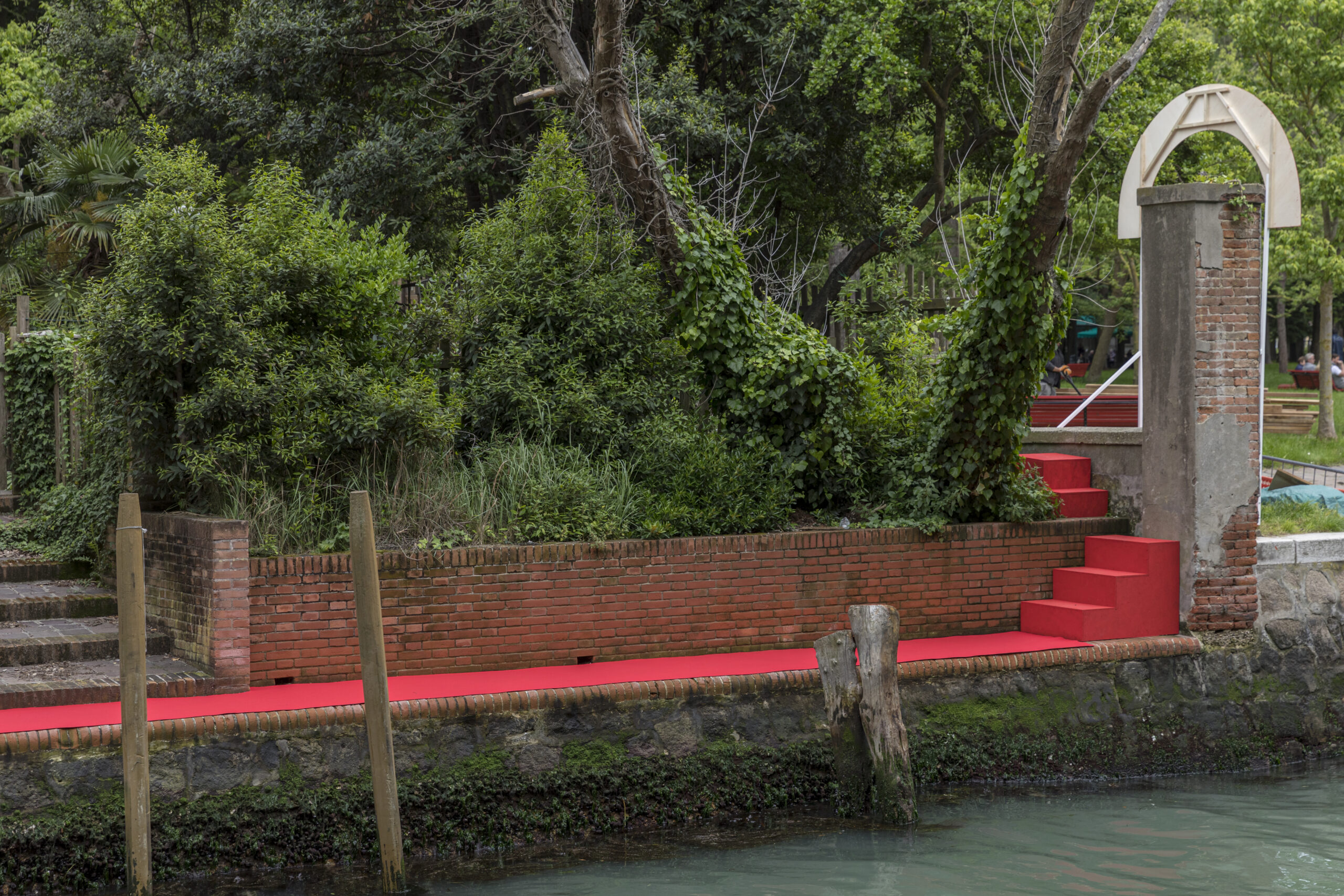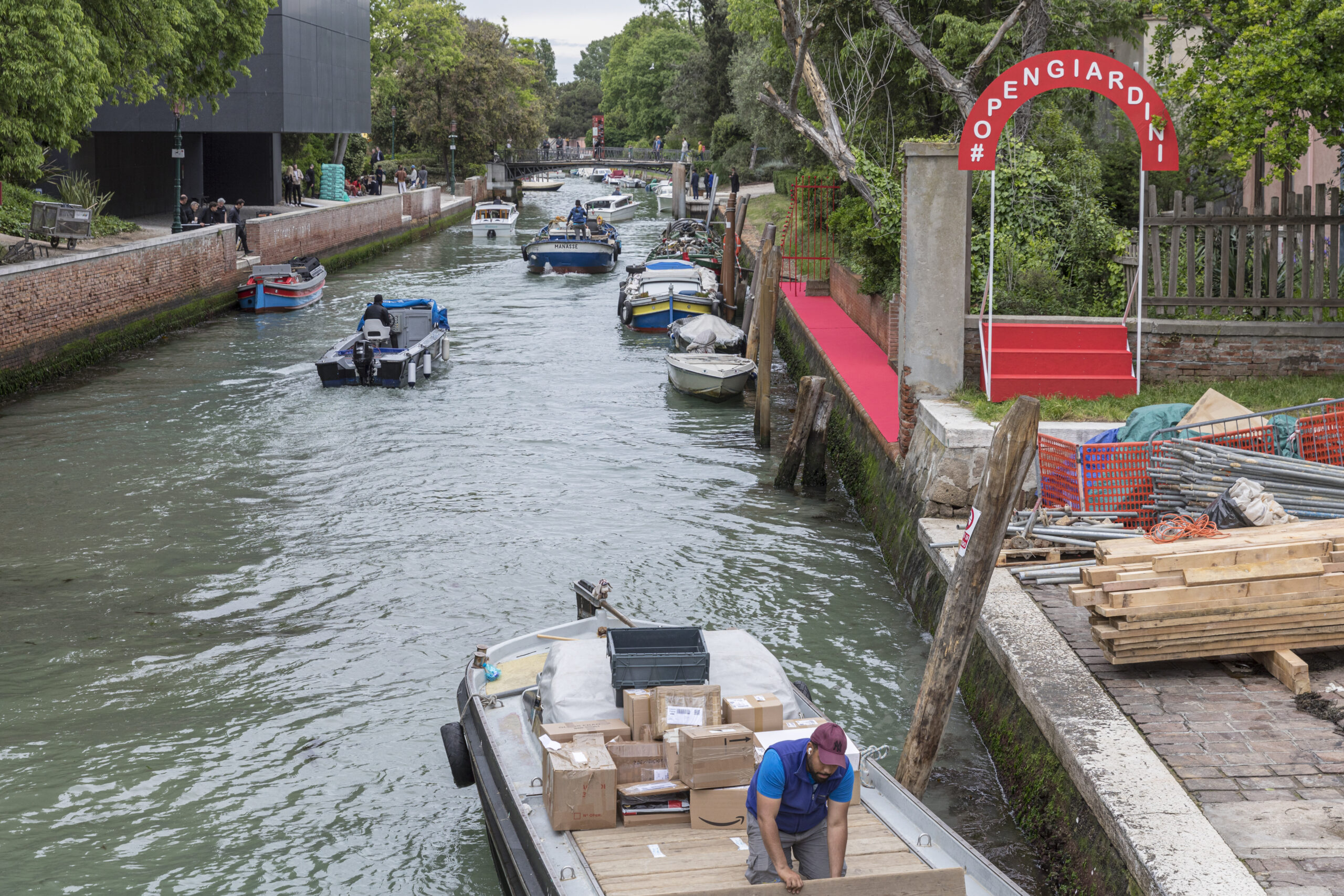Emanuele Piccardo: Unfolding Pavilion every Venice Biennale proposes interesting topics with irony and intelligence. In 2023 you worked on the Giardini of Biennale…Can you tell us the meaning of this kind of approach?
UP: The Giardini Pubblici is a public park commissioned by Napoleon in 1807 to provide a green lung for the densely built city of Venezia. Since the opening of the first International Art Exhibition, in 1895, the vast majority of the area has been fenced off and given to the Biennale, removing it from public use. Currently, only one-third of the Giardini’s total surface area is open to the public, with the rest being accessible only during the visiting hours of the Art and Architecture Biennales. But the Giardini della Biennale are not private property: they are located on public land that the City of Venezia freely grants to the Biennale in exchange for upkeep and security. This is a clear case of private expropriation of public territory by an institution that has colonized Venezia for the last 100 years: something worth discussing at a Biennale dedicated to decolonization. In fact, when no exhibitions are taking place and the pavilions are closed, the entire Giardini could theoretically be open to the public for 6 months of the year. Nonetheless, access to the Biennale’s part of the park is restricted and controlled all year long.

EP: Why do you think the Biennale is deaf to contributions such as Unfolding Pavilion?
UP: The Biennale is not deaf. In fact, it took them a few days to remove our installations, indicating that they are aware of what we did and consider it problematic. This means that they value our work, albeit in an antagonistic way. However, if you ask us why the Biennale has no intention of dealing more openly with its border condition, as demonstrated by the rejection of the two proposals made by the Austrian Pavilion, we can reply that it would most likely require a significant amount of organizational effort and political will to do so: something we wouldn’t expect from any ordinary private organization, but we do expect from one of the world’s most important cultural institutions.
EP:It is contradictory that the Biennale of decolonization is really that of the colonization of Venice…
UP: Indeed, it is. We were introduced to Lesley Lokko during the preview days and gave her a copy of our catalogue, explaining how the Biennale has colonized the Giardini over the past 130 years. When you are bound to an official institution, it is difficult to address such issues. On the other hand, because we are completely independent, we have the freedom to pursue the kind of institutional critiques that the other curators could not. Even the all-powerful Biennale faces discrimination and bigotry. We’re referring to the three Ghanaian curators who worked with Lokko and the Biennale but were denied entry into Italy because some right-wing Italian bureaucrats suspected them of being “non-essential young men” attempting to sneak into the European Union. As you can see, injustice occurs at all levels.
EP: It always seems that the Biennale is an island separated from the city, even the Austrian pavilion has worked on your same topic about the exclusion in the use of spaces even at the Arsenale. Is something moving also in the national pavilions?
UP: It was a coincidence that we and the Austrians were working on the same topic, with similar concerns about the Biennale’s expansionist practices. We met them just a few days before the opening of the exhibition. We are now planning to join forces and collaborate during the Biennale’s remaining months in order to make our common message heard and put pressure on the Biennale Foundation. It is actually fantastic that different national pavilions have approached the difficult relationship between the Biennale and the City of Venice in recent years, ranging from the Romanian pavilion in 2005, which opened its backdoor to the city, to the German pavilion in 2022, which attempted to temporarily relocate their building outside the Biennale border.
Unfolding Pavilion is a project curated by Davide Tommaso Ferrando and Daniel Tudor Munteanu.
Photographs by Laurian Ghinitoiu
